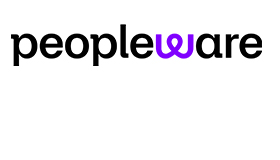Chris Dealy at injixo takes a look at WFM ROI and how workforce management software pays for itself.
To anyone responsible for planning in a contact centre, the return on investment (ROI) of WFM (workforce management) software is so obvious that it doesn’t need explaining.
Unfortunately, it is often not so obvious to those who are responsible for signing off on the expenditure.
That’s why you need a solid business case. The key ingredient of the workforce management business case is the ROI calculation, which quantifies the hard benefits of investing in workforce management software.
Let’s take a look at the anatomy of workforce management ROI.
What Are the Hard Benefits of WFM?
WFM delivers return on investment in several ways. Let’s look at them one by one.
Reduced Agent Labour Costs
In a typical contact centre, labour costs account for at least 75% of total operating expenses. Even a small percentage improvement in productivity will have a significant impact on total costs. WFM makes that happen by more accurate forecasting that enables better planning with fewer nasty surprises.
It delivers schedules that efficiently match customer demand with logged-in agents, avoiding periods of wasteful over-staffing.
It provides self-service tools to save time on things like vacation requests. And it reduces shrinkage by enabling better management of schedule adherence and absences.
This doesn’t mean that a WFM system will lead to layoffs. Staff turnover is a fact of life in every contact centre.
If WFM enables you to deliver on your service level commitments with fewer staff, you simply won’t replace every agent who leaves. Your headcount will naturally tend towards a new optimum.
Reduced Planner/Team Leader Costs
A modern WFM application automates and streamlines much of the planning process. It eliminates tedious, error-prone manual work and saves lots of time for planners and team leaders.
Automated forecasting generates super-accurate forecasts with almost no effort. Once configured, automatic scheduling builds optimized schedules with similarly low effort.
Meeting scheduling, shift swaps, and time off requests are handled by the WFM system, and real-time KPI dashboards save time every day.
Automation and artificial intelligence in WFM do not lead to planners and team leaders being laid off.
Rather, they are freed up to focus on coaching their teams, collaborating with other departments, creating robust real-time management plans, building long-range forecasts, improving the planning process, and so on.
Reduced Hiring Costs
Every contact centre experiences staff turnover. It’s neither possible nor desirable to have zero turnover.
But excessive turnover is not only disruptive and bad for morale. It takes time to hire and train new agents.
During the learning period, agents are less productive than tenured employees. But that’s not the worst of it. Hiring, onboarding and training typically cost several thousands per agent.
Anything you can do to improve agent satisfaction and morale will have a positive impact on turnover and its associated costs.
WFM boosts agent satisfaction through more accurate forecasting and schedules that avoid periods of stressful under-staffing.
Balanced and fair schedules improve work-life balance. Skills-based scheduling matches customers with the most appropriate agents, improving customer experience and agent job satisfaction.
And agents love having a say in their working time with self-service features to view their shifts, their colleagues’ shifts, swap shifts, book time off, and so on.
Increased Profit
If you sell products or services in your contact centre or collect unpaid debt, abandoned calls translate into lost revenue.
WFM enables you to consistently match the supply of employees with the appropriate skills (e.g. sales skills) to customer demand.
That inevitably drives down the abandonment rate, leading to more conversations and more closed deals.
Tangible v. Intangible Benefits
Tangible benefits such as those described above can be translated into monetary terms. For example, it’s not unreasonable to assume that by implementing adherence monitoring, you will reduce out-of-adherence shrinkage for the average agent by 5 minutes per 8-hour shift.
That translates into a productivity increase of 1% (5mins / 8hrs = 1%). Multiply that by the total salary bill in the contact centre and you’re probably looking at a big number compared with the cost of implementing a WFM system.
By applying the same rationale to all the sources of WFM ROI, you’ll soon have the foundation of an irresistible business case.
In addition to the tangible benefits, WFM offers intangible benefits that may not have a direct monetary value but offer real value to the business.
These include improved customer loyalty, enhanced brand reputation, eligibility for Great Place to Work status, and so on. It’s worth mentioning those in the business case, too.
Conclusion
There’s no doubt that a modern WFM application can quickly pay for itself many times over. But to get approval from all the stakeholders in your organization, you’ll need a strong business case backed up by hard-nosed return on investment calculations that express the benefits in monetary terms.
By quantifying the tangible benefits, you can gauge the true value of the software and its impact on your contact centre’s efficiency and customer satisfaction.
When you add in the intangible benefits and evidence about the WFM achievements of similar organizations, your business case will be ‘an offer they can’t refuse’.
This blog post has been re-published by kind permission of Peopleware – View the Original Article
For more information about Peopleware - visit the Peopleware Website
Call Centre Helper is not responsible for the content of these guest blog posts. The opinions expressed in this article are those of the author, and do not necessarily reflect those of Call Centre Helper.
Author: Peopleware
Published On: 29th Jan 2024 - Last modified: 9th Dec 2024
Read more about - Guest Blogs, Chris Dealy, Peopleware





 Peopleware is a leading workforce management (WFM) solution, trusted by over 500,000 users in 30+ countries. With smart forecasting, automated scheduling and real-time management, organizations can optimize workforce efficiency and keep work aligned with demand. From precise time tracking to flexible planning, Peopleware helps organizations boost operational efficiency and foster a more engaged, productive workforce.
Peopleware is a leading workforce management (WFM) solution, trusted by over 500,000 users in 30+ countries. With smart forecasting, automated scheduling and real-time management, organizations can optimize workforce efficiency and keep work aligned with demand. From precise time tracking to flexible planning, Peopleware helps organizations boost operational efficiency and foster a more engaged, productive workforce. 








